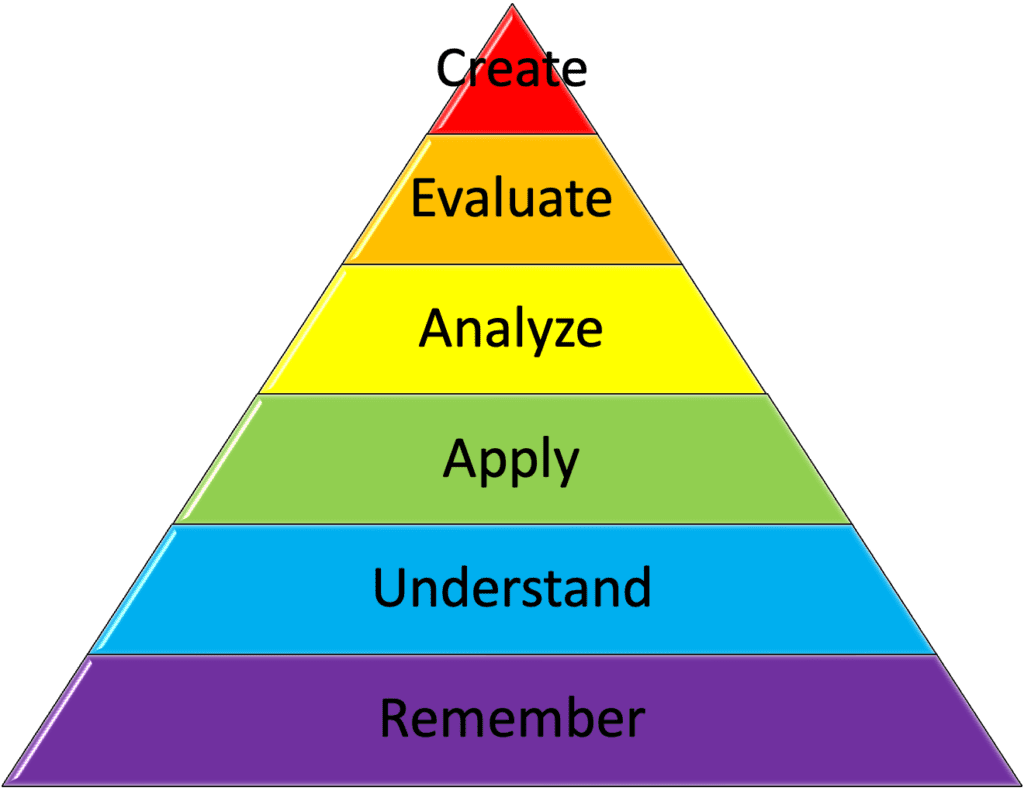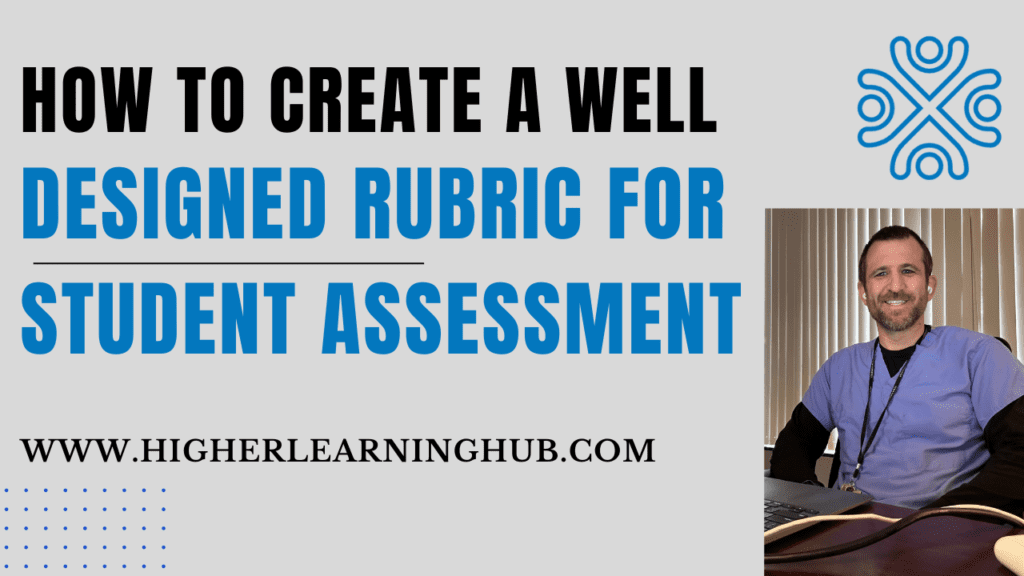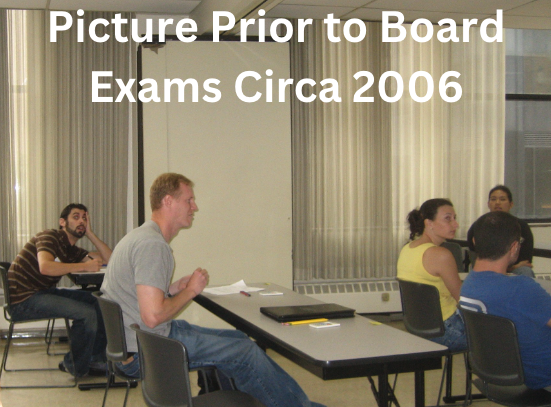Authored by Dr. Leland Jaffe, Associate Professor, and Associate Dean; Published on 1-8-24
Embarking on the journey of higher education is exciting, but without a clear roadmap, the destination may seem somewhat elusive for students. Learning objectives serve as the compass, guiding both educators and learners toward a common goal. As someone passionate about education, I have discovered the power of well-crafted learning objectives in shaping the learning experience for students. In this blog post, I’ll share best practices and tips on how to write effective learning objectives that inspire and drive student success in higher learning.
Understand the Importance of Learning Objectives
Learning objectives are the foundation of any course. They articulate the intended outcomes and set the stage for focused, purposeful learning and course goals. By understanding the significance of measurable objectives, you can design meaningful and impactful student learning experiences.
Using Learning Objectives to Guide Instructional Design
Measurable learning objectives provide a clear picture of the intended outcomes of a learning experience, ensuring that everyone involved understands the goals and new knowledge to be achieved by the end of the course. Importantly, learning objectives set a standard for assessment, enabling educators to measure progress and success in a meaningful way. They guide instructional design, helping educators tailor their methods to align with specific learning goals. Furthermore, well-crafted learning objectives empower learners by offering a transparent view of what is expected, fostering motivation and engagement.
Start with a Concrete Action Verb
The foundation of a learning objective lies in the action it demands. The first step of writing your objective begins with a strong, measurable verb that communicates what the learner should accomplish. Words like “analyze,” “synthesize,” and “evaluate” convey higher level thinking skills, while “identify”, “define”, and “understand” set the stage for foundational/lower level understanding.
Examples of Action Verbs
Selecting the right verbs for learning objectives is a crucial aspect of instructional design, as these action words define the desired outcomes and guide the learning process. Use verbs that communicate the specific actions learners are expected to perform, shaping the level of cognitive engagement required. Examples of action verbs such as “define,” “recall,” and “identify” are associated with lower-order thinking skills, emphasizing basic understanding. On the other hand, verbs such as “analyze,” “synthesize,” and “evaluate” signal higher-order thinking, prompting learners to engage in critical thinking and application of knowledge. The precision of these verbs ensures clarity in communication, leaving no room for ambiguity about the intended learning outcomes and appropriate level of learning.
Be Specific and Concise
Specific statements are key when writing learning objectives. Avoid vague language and ambiguous terms. Instead, focus on specific and concise statements that leave no room for interpretation. Learners should know exactly what is expected of them and how success will be measured.
Being specific with learning objectives is essential for several reasons. Clarity is at the core of effective education, and specific objectives leave no room for misinterpretation of the desired outcome. When learning objectives are precise, both you and learners gain a clear understanding of what is expected, facilitating focused efforts toward a well-defined goal.
Moreover, learning objectives aid in the assessment process, allowing educators to accurately measure progress and success. It also empowers learners by offering transparency and direction, fostering motivation and engagement. In essence, specificity in learning objectives enhances the overall educational experience, promoting a more efficient and purposeful journey toward mastery and understanding.
Align Your Learning Objectives with Bloom’s Taxonomy


Bloom’s Taxonomy provides a structured framework for categorizing educational objectives based on cognitive complexity. Consider aligning your learning objectives with Bloom’s levels, progressing from basic knowledge (lower level skills) and comprehension to the highest levels of thinking skills such as application, analysis, synthesis, and evaluation.
Lower vs Higher Order Thinking Skills
When crafting good course objectives, selecting appropriate action verbs aligned with Bloom’s Taxonomy is essential. The choice of verb directly correlates with the cognitive process a learner is expected to engage in. For instance, verbs like “define” and “identify” are associated with lower order skills, focusing on basic knowledge and comprehension. On the other hand, verbs such as “analyze,” “evaluate,” and “synthesize” target higher-order thinking skills, encouraging learners to engage in critical thinking and problem-solving. The careful integration of these action verbs ensures that learning objectives are not only specific but also reflect the desired depth of understanding, fostering a comprehensive and progressive learning experience.
Incorporate Real-World Relevance
Course objectives gain added significance when they connect to real-life applications. Demonstrate the practical value of the knowledge or skills being acquired by illustrating how they can be applied in authentic scenarios. This not only enhances engagement but also motivates learners by highlighting the relevance of their efforts.
Bring Your Teaching To Life
As an educator, I have found immense value in incorporating case studies into my lectures to underscore the real life importance of the concepts being discussed. Case studies serve as powerful tools, bridging the gap between theory and practical application. By presenting real-world scenarios, I provide my students with tangible examples that showcase how the theoretical knowledge they acquire in class directly translates to solving actual problems and treating patients.
This approach not only enhances their understanding but also cultivates critical thinking skills as they grapple with complex situations. Moreover, case studies make the subject matter more relatable and memorable, as students can see the direct impact and relevance of what they are learning in the context of authentic, everyday challenges. The inclusion of case studies not only enriches the learning experience but also prepares students for the dynamic and unpredictable nature of the professional world they will enter upon completing their education.
How To Write Effective Learning Objectives – Conclusion
Crafting effective learning objectives is an art that requires thoughtfulness, precision, and a deep understanding of both the goals of the course and the learners. Learning objectives serve as a powerful tool by providing a clear roadmap for educational experiences, guiding both educators and learners toward focused and measurable goals, and ultimately enhancing the effectiveness of the learning activities. By embracing these tips, educators can create learning objectives that guide learners on a purposeful journey toward success. As we navigate the ever-evolving landscape of education, let us empower learners with the necessary skills, clarity, and direction they need to thrive in the real world.







